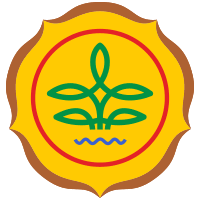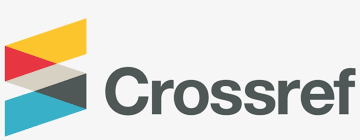Identifikasi Karakteristik Gejala Serangan Banana Bunchy Top Virus (BBTV) dan Intensitasnya pada Tanaman Pisang di Beberapa Kecamatan di Kabupaten Kutai Kartanegara
Abstract
Keywords
Full Text:
PDFReferences
Agrios,G.W. 1997. Plant Pathology Fourth Edition. New York:Academic Pres.
Balai Pengkajian Teknologi Pertanian Kalimantan Timur. 2017. Sanitasi, Teknik Pengendalian Yang Efektif. (http://kaltim.litbang.pertanian.go.id) diakses tanggal 11 Desember 2018.
Brooks, F.E. 1999. Incidence and distribution of Banana Bunchy Top Virus in American Samoa. Journal of South Pasific Agriculture 6(1): 25-28.
Furuya,N.,Dizon,T.O., dan Natsuaki, K.T.2006. Molecular characterization of banana bunchy top virus and cucumber mosaic virus from Abaca (Musa textilis Nee).Journal of Agricultural Science, Tokyo University of Agriculture 51:92–101.
Nurhadi A., & L. Setyobudi. 2000. Status of banana and citrus viral diseases in Indonesia. Di dalam: Molina AB, Roa VN, Bay-Petersen J, Carpio At, joven JEA, editor. Managing Banana and Citrus Diseases. Proceeding of a Regional Workshop on Disease-free Planting Materials; Davao City (Philippines), 14-16 October 1998. Davao City: International Plant Genetic Resources Institute. P. 135-148.
Semangun H. 2000. Penyakit-Penyakit Tanaman Hortikultura di Indonesia. Gadjah Mada University Press. Yogyakarta.
Silalahi, U. 2015. Metode Penelitian Sosial Kuantitatif. Bandung : Refika Aditama.
Sulandari, Sri. 2006. Deteksi dan Kajian Kisaran Inang Virus Penyebab Penyakit Daun Keriting Kuning Cabai. Jurnal Hayati. Vol 13(1): 1-6
Thomas, J.E. 2008. Banana Bunchy Top Virus. In Mahy B.W.J & M.H.V. Van Regenmortel (eds.), Desk Encyclopedia of Plant and Fungal Virology. Elsevier Ltd, London.Vol (2): Hal 94-100.
Widiarta, I. N., Burhanuddin, A. A. Daradjat, dan A. Hasanuddin. 2004. Status dan program penelitian pengendalian terpadu penyakit tungro. Prosiding Seminar Nasional Status Program Penelitian Tungro Mendukung Keberlanjutan Produksi Padi Nasional. Makassar, 7-8 September 2004.
DOI: http://dx.doi.org/10.35941/jatl.2.1.2019.2536.55-60
Refbacks
- There are currently no refbacks.
Copyright (c) 2019 Jurnal Agroekoteknologi Tropika Lembab







4.jpg)
.jpg)











